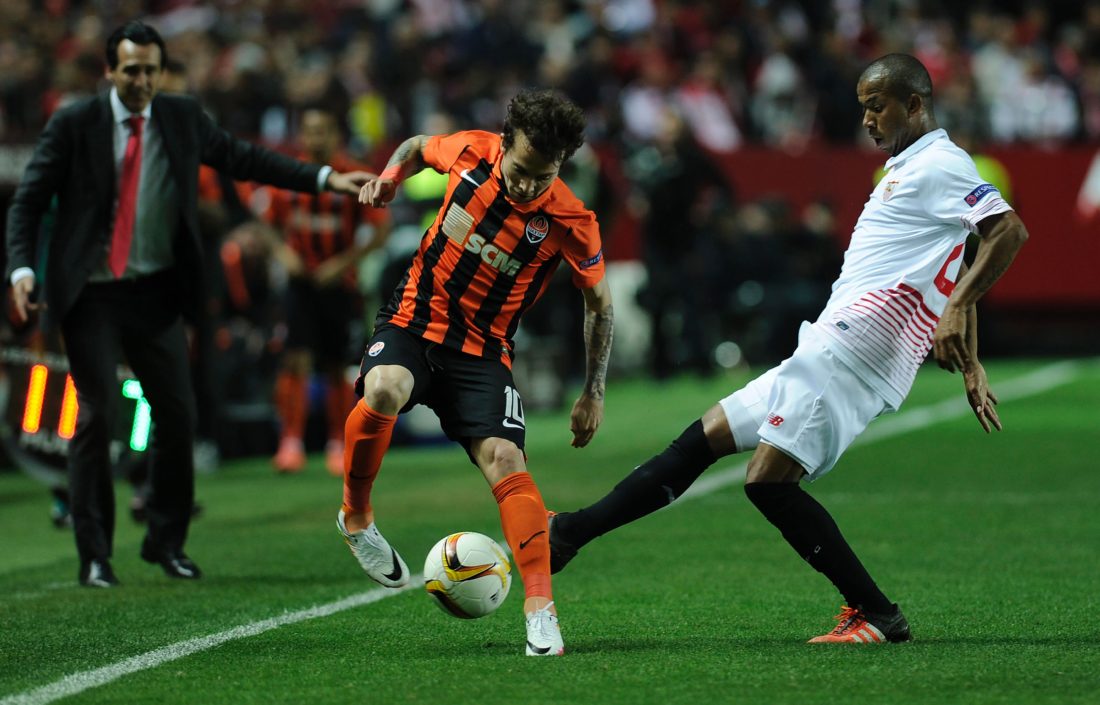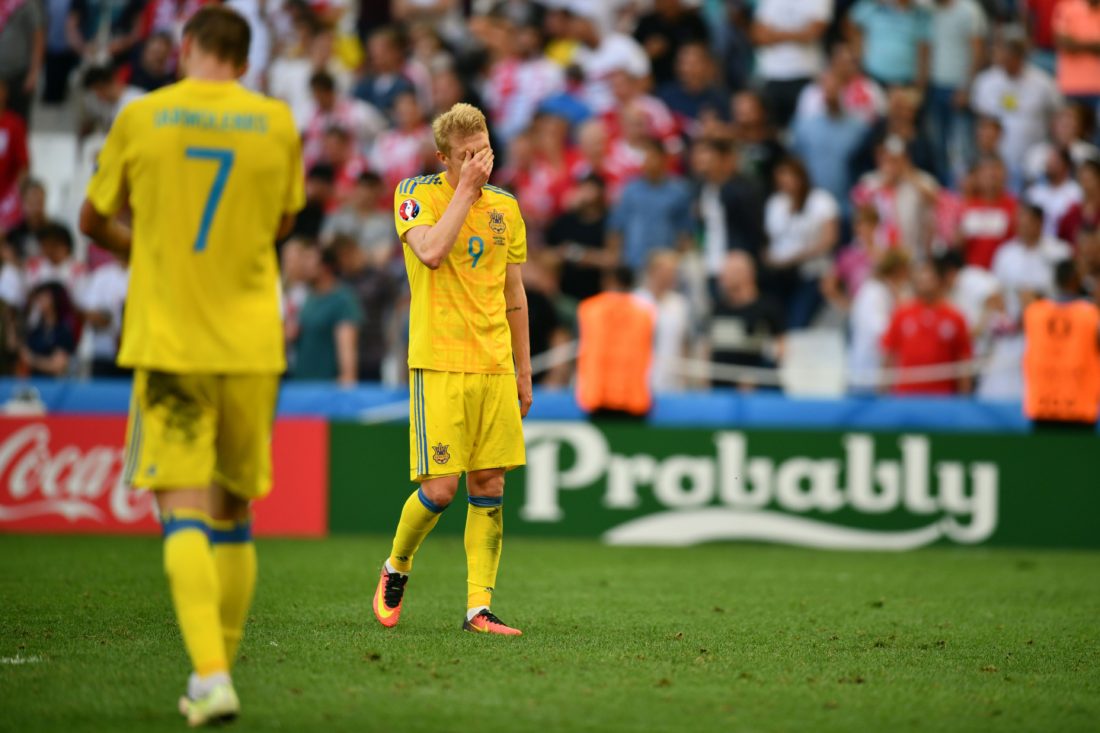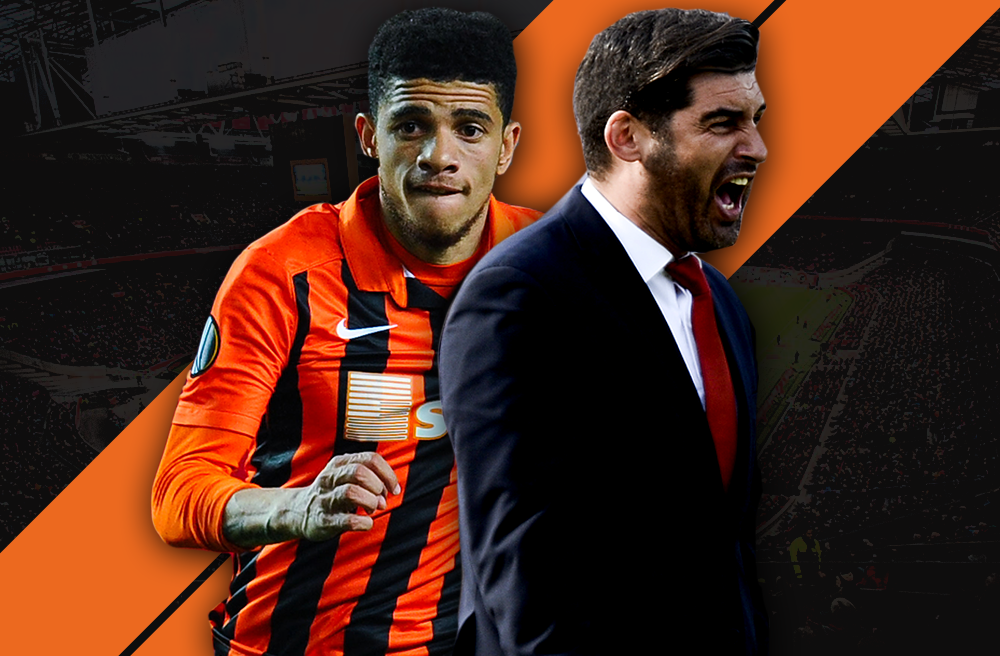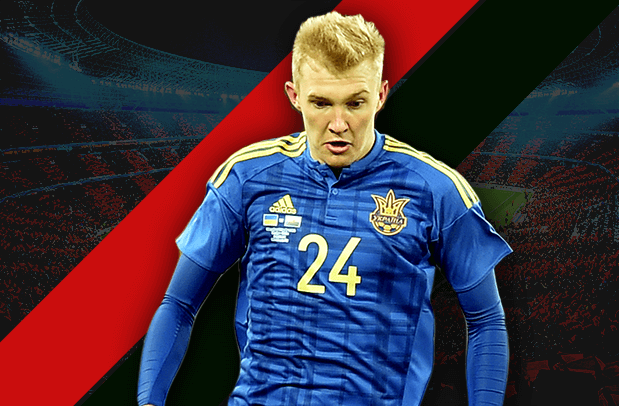
Being a football hipster is serious business with knowledge about the young starlet making waves for a non-mainstream mid table side often a prerequisite rather than a feather in the cap. To further enhance your, perhaps, burgeoning reputation as a true hipster, Outside of the Boot is on hand to provide an in-depth guide to some of the less celebrated teams around Europe. In this edition of the series, Richard Pike has a look at Ukraine’s Shakhtar Donetsk.

THE PREVIOUS CAMPAIGN
The word “legend” does tend to be overused in the modern era when it comes to describing sports athletes and coaches, however, in the case of Mircea Lucescu and his time at Shakhtar Donetsk, it more than does the veteran coach justice. With the break-up of the Soviet Union in 1991, throughout the 1990’s, one club emerged as the dominant force in Ukrainian football domestically and on top of this, brought Ukrainian football to the eyes of the European continent with their exploits in the Champions League, that club was Dynamo Kiev. The capital club won nine consecutive titles between 1992 and 2001 with the peak of their achievements coming in 1999 when the club reached the Semi-Finals of the UEFA Champions League and thrust two of its star players Andriy Shevchenko and Serhiy Rebrov to the attention of a whole continent.
In the same timeframe, Shakhtar did not win one championship yet managed six second place finishes, cementing themselves as Ukraine’s second best team. However, whilst the 90’s comfortably belonged to Dynamo, the 00’s were evenly split and it was the appointment of veteran Romanian manager Mircea Lucescu by Shakhtar in 2004 which completely changed the landscape of Ukrainian football. Between the 2000-01 and 2009-10 seasons, Dynamo and Shakhtar shared five championships apiece, of Shakhtar’s five titles between this era, four of them came under the stewardship of Lucescu, 2004-05, 2005-06, 2007-08 and 2009-10. However, whilst there was a share of the domestic bragging rights in the 00’s between Dynamo and Shakhtar, Shakhtar emerged as the stronger force in European football and even eclipsed Dynamo’s Champions League Semi-Final result in 1999 by winning the UEFA Europa League in 2009. Into the 2010’s Lucescu’s Shakhtar continued to enjoy success both domestically and in Europe, Between 2009-10 and 2013-14, Shakhtar won five consecutive Ukrainian titles and reached the Quarter Finals of the Champions League in 2010-11, the furthest a Ukrainian club had managed to go in the competition since the Dynamo team of 1998-99. Lucescu’s Shakhtar breathed new life into a championship, no longer was Ukrainian football simply a one-horse race every year, it had now a rivalry and two evenly matched teams similar to Argentina’s Superclasico between Boca Juniors and River Plate and Scotland’s Old Firm between Glasgow Celtic and Glasgow Rangers.
2015-16 proved to be Lucescu’s last season at the Donetsk club who are currently based in Lviv in Western Ukraine due to the current conflict in Eastern Ukraine. It turned out to be a mixed season for Shakhtar, for the second season in a row, they missed out on winning the Ukrainian title as Dynamo claimed their second title in a row, however, Shakhtar reached the semi-finals of the Europa League before finally succumbing to eventual winners Sevilla and won the Ukrainian Cup beating fellow Eastern Ukrainian club Zorya Luhansk in the final. Even though the club missed out on the title, they did the league double over their rivals Dynamo, with 3-0 wins in Kiev and their temporary home in Lviv. Lucescu stepped into small shoes upon arriving at Shakhtar, he now leaves very big ones for his successor to fill.
MANAGER PROFILE
After their triumph at Euro 2016, many pundits are hailing the emergence of Portugal’s young and talented players like Renato Sanches, Joao Mario, William Carvalho and Andre Gomes who could go on and make Portugal world champions at the World Cup in 2018. However, whilst the emergence of young, talented Portuguese footballers has only recently occurred, young, talented Portuguese managers have been around for much longer. Since Jose Mourinho’s emergence to global fame by winning the UEFA Cup and Champions League in consecutive seasons in 2003 and 2004, many young Portuguese coaches have emerged alongside the Special One and have enjoyed success. Andre Villas Boas’ managerial career might have stalled recently, but his Porto team of 2010-11 which won the Portuguese League, Portuguese Cup and Europa League thrilled a continent, their opponents in the Europa League final were fellow Portuguese club SC Braga, who were coached by former Portuguese international forward Domingos Paciencia. Other faces in recent years to emerge have been former Braga and now AS Monaco manager Leonardo Jardim, former Valencia and now Porto manager Nuno Espirito Santo, current Sheffield Wednesday manager Carlos Carvahal and current Benfica manager Rui Vitoria.
Perhaps after seeing this emerging conveyor belt, Shakhtar have decided to go Portuguese themselves when selecting a replacement for Lucescu, their eventual choice being 43 year-old Paulo Fonseca. Whilst Fonseca, who was born in Mozambique in 1973 when it was still a Portuguese colony might not have the stature of other Portuguese coaches like Mourinho or Villas-Boas, but he has enjoyed some notable successes in his short career to date. After retiring as a player in 2005 at the age of 32, Fonseca began coaching immediately in the modest surroundings of the youth team of his final club Estrela Amadora. Upon leaving Amadora in 2007, the first five years of his managerial career saw unremarkable stints in the lower tiers of Portuguese football before the move that really launched his managerial career in 2012. This move was to top flight Portuguese club Pacos de Ferreira in time for the 2012-13 season. What followed was a revelation as Pacos, a very modest club, even by Portuguese standards finished an incredible 3rd place in the final table behind eventual champions Porto and runners-up Benfica, a jump of 7 places from their 10th placed performance in 2011-12 and guaranteed them a place in the Champions League qualifiers for the first ever time in their history ahead of much larger clubs like Braga, Sporting CP and Vitoria Guimaraes.
Let’s put this achievement into context, Pacos de Ferreira has a population of 56,340, is a town based in Northern Portugal in the Greater Porto area, the club has a stadium capacity of just 7,000 and in recent years has seen attendances of less than 1,000 spectators at some home league matches. It was a miracle for them to finish ahead of city clubs like Braga, Guimaraes and Sporting all of whom boast stadium capacities between 30,000 and 50,000. An example of how much of an achievement Pacos’ season was would be like Derby County winning the English Championship this season and Burton Albion, a club from a Burton, a small town in Derbyshire winning promotion to the Premier League alongside their larger neighbours via the play-offs.

43-year-old Paulo Fonseca won the Portuguese Cup last season with Braga and the 2013 Portuguese Supercup with Porto. GENYA SAVILOV / AFP / Getty Images
After achieving such success at Pacos, the call from their large neighbour Porto came calling in the summer of 2013 and Fonseca accepted the job. However, it did not go well and in March 2014 with Porto trailing fierce rivals Benfica by 9 points in the championship, Fonseca was dismissed as manager. Rather than letting the disappointment of his time in Porto deter him, Fonseca was quickly back into action as he returned to his old club Pacos for the 2014-15 season, improving their ranking from 15th place in 2013-14 to 8th place at the end of the 2014-15 season. However, the real redemption for Fonseca and what helped him truly recover his reputation after his Porto nightmare was his one season spell at Braga in 2015-16. Whilst the league campaign saw Braga fulfil expectations by finishing in 4th place behind Portuguese football’s Big Three (Os Tres Grandes) of Benfica, Porto and Sporting, Fonseca’s Braga became cup specialists reaching the semi-finals of the Portuguese League Cup before losing to eventual winners Benfica, reaching the quarter finals of the Europa League before losing to his new employers Shakhtar and winning the Portuguese Cup by gaining revenge on his old club Porto in the final, only the second Portuguese Cup in Braga’s history, fifty years after their last triumph in 1965-66.
Despite his success at Braga, recent history tends to say they are a club who tends to lose managers who perform well there like Jorge Jesus, Domingos Paciencia and Leonardo Jardim and Fonseca was no different. With a likely belief that he could not take Braga up a level and win the club their first ever Portuguese title faced with such competition in Portugal’s Big Three, Fonseca decided to take on the mantel of succeeding Lucescu at Shakhtar and has signed a two year deal with the Ukrainian giants.
TACTICAL APPROACH
Fonseca likes his teams to play open, attractive attacking football and could play attack minded formations like a 4-3-3 or a 4-4-2. This will follow in the footsteps of Lucescu who made Shakhtar an attractive side to watch under his stewardship. Due to curiosity about how Shakhtar would go in a competitive game under their new manager, I recently watched Fonseca’s second competitive game in charge of Shakhtar and a good indicator of how well his spell will start at Shakhtar, the first leg of their UEFA Champions League Third Qualifying Round against Swiss side Young Boys Bern. The first leg of the match was played at Shakhtar’s temporary home in Lviv and the end result was a 2-0 victory for Shakhtar which puts them in a commanding position to reach the final round of qualifying for European football’s elite competition.
One does have to bear in mind when analysing Shakhtar’s victory that tougher tasks and higher quality opponents will lie in store than Young Boys, nonetheless, I was impressed with what I saw from Fonseca’s Shakhtar. It was as comfortable a two-nil victory as one could expect to see and with some better finishing and a little more luck it could have been an even more convincing victory. Young Boys might have been down to ten men for the final half hour of the match, but even with eleven against eleven, it was men against boys all game and Shakhtar were in cruise control.
Like Futbolgrad stated, Fonseca set up his side in an attacking 4-4-2 formation. The fullbacks are encouraged to support attacks in this formation and in ageless veteran Croatian right back Darijo Srna, Shakhtar have a player who has been one of the best at that in European football over the last decade. The central midfield two consist of Brazilian deep playmaker Fred, whose primary job is to distribute passes to the flanks and two strikers and Ukrainian international Taras Stepanenko, who is a box-to-box midfielder who can contribute in both attack and defence. On the wings, Shakhtar have two skilful Brazilians, 23 year old Bernard on one side, who was a member of the Brazil squad at the last World Cup and uncapped 28 year-old Marlos on the other side. Against Young Boys, the primary objective for Shakhtar was to get the ball to either of these two players and let them create openings and goal-scoring chances. Both players possess attributes that will prove useful for Shakhtar, the traits of new, modern day wide players who beat their fullback and then cut inside to either drill a low cross into the box or have a shot at goal on their stronger foot and the traits of wingers from 15/20 years ago to beat a fullback and then whip a floated high cross into the penalty box.
Finally, Shakhtar’s two forwards consisted of a deeper-lying forward who can link up play between the midfield and attack alongside playing quick one-two’s with the wingers in 28 year old uncapped Brazilian Taison and a penalty box poacher and a name familiar to English football fans in 33 year old Brazilian-born Croatian international Eduardo, once of Arsenal. It must be said that Taison did sometimes drop into an attacking midfield role during the game, but crucially, this only occurred when either of the two wide players opted to cut inside as opposed to staying wide. This was done to facilitate the ability to play quick one-two’s in the final third to attempt to craft out a goal-scoring opportunity. Taison pushed further up and played as a striker when Bernard and Marlos opted not to cut inside from the flanks. Shakhtar will be a team who will play open football under Fonseca, stretching the pitch as much as possible and their second goal of the match against Young Boys was a great 5/6 pass move which began from winning possession in midfield and included successful passes forward both centrally and down the flanks before Stepanenko laid on the assist for Ukrainian forward Yevhen Seleznyov, substituted on for Eduardo to tap home from inside the box.
TRANSFER MARKET ACTIVITY
It has been a quiet summer in terms of both ins and outs at Shakhtar for the senior team, the only notable addition has been Ukrainian international striker Seleznyov from Russian club Kuban Krasnodar whereas the only notable departure has been Ukrainian striker Olexandr Hladkyy who joined Shakhtar’s rivals Dynamo Kiev.
THREE KEY PLAYERS
Bernard – With Fonseca looking to use a formation which will put emphasis on wide players, 23 year-old Bernard has a chance to revive his career which was showing so much promise as a teenager at Brazilian club Atletico Mineiro but has stalled since his move to Shakhtar in the summer of 2013. Whilst the winger was part of Brazil’s World Cup in squad in 2014, he has not been capped in the two years since Luis Felipe Scolari vacated the Brazilian national team job after the World Cup under Scolari’s predecessor Dunga and missed the Copa Americas both last summer and this summer. However, with Dunga now gone and the five-time World Champions in a urgent state of rebuilding after their disappointing group stage exit in this summer’s Copa America, Bernard can once again put himself in the thoughts of new Brazil coach Tite with some fine performances for Shakhtar in a system that looks like it will be tailor-made for him under Fonseca.

Bernard joined the Ukranian club in 2013 after impressing with Atletico Mineiro. CRISTINA QUICLER / AFP / Getty Images
Taras Stepanenko – It is fair to say that 26 year-old midfielder Stepanenko is a character. In April 2016 he became infamous for a badge-kissing celebration in front of Dynamo Kiev’s fans during Shakhtar’s 3-0 win against their fierce rivals which resulted in an on-pitch brawl between both sets of players and Dynamo’s Andriy Yarmolenko, an international team-mate of Stepanenko violently shoving him to the ground which began a temporary feud between the two just a few months before Ukraine’s Euro 2016 campaign. Nonetheless, he is a talented player and with a 2 man midfield likely to be deployed by Fonseca, Stepanenko’s role as a box to box midfielder with the capability to put in lots of defensive work alongside setting the transition from defence to offense by contributing with assists and sometimes goals will be crucial to Shakhtar’s fortunes.
Eduardo – He may be 33 years old now, but Eduardo is still a very capable performer for Shakhtar as emphasised by his 12 goals from 19 games last season, which made him second top scorer at the club behind Brazilian attacking midfielder Alex Teixeira. Will face added competition for his place from summer signing Yevhen Seleznyov for the poacher striking role in the starting eleven.
TALENT RADAR KEY YOUNG PLAYER
Viktor Kovalenko – 20 year-old Kovalenko came to the world’s attention during last year’s FIFA Under 20 World Cup where he won the golden boot award as top goalscorer with 5 goals which included a hat-trick against the United States. However, whilst last season represented a breakthrough season for Kovalenko, this season could get tougher under Fonseca if reports are to be believed. They state that Fonseca’s 4-4-2 or 4-3-3 formations will see no place for an out-and-out attacking central midfielder, which could mean Kovalenko might have to find himself looking for a different position in the team like the flanks. In the match against Young Boys, Kovalenko was named amongst the substitutes and was not one of the substitutes brought on throughout the game.

Viktor Kovalenko was part of Ukraine’s disappointing Euro 2016 campaign. BERTRAND LANGLOIS / AFP / Getty Images
However, over the course of a season, there are so many challenges that a manager must overcome like players losing form, injuries and juggling a squad for several competitions, therefore, I would expect Kovalenko one way or the other to have an impact on Shakhtar’s fortunes this season. One potential option is putting Kovalenko in Taison’s position as the slightly deeper of the two forwards, in this position you would not take away his goal scoring capabilities whilst he could also interlink with both Marlos and Bernard on the flanks when they cut inside from the flanks as I alluded to earlier in the article.
CONCLUSIONS AND EXPECTATIONS
Succeeding Lucescu is no easy task at all given how he established Shakhtar both domestically and in Europe. Shakhtar owner Rinat Ahkmetov has entrusted the responsibility to a man who 3 years ago was rated amongst the best young coaches in Europe. Upon analysing Shakhtar, I think there are three key issues Fonseca will have to find solutions for if his spell in Ukraine is to be a success.
The first one is replicating the ability of Lucescu to communicate effectively with all members of his squad. As well as his native Romanian, Lucescu is also able to speak both Portuguese and Russian, which was extremely handy at a side like Shakhtar where you had for many years a 50/50 divide in the squad between Ukrainian/ex-USSR/Eastern European players and Brazilian players. His ability to communicate without problems would have played a big part in his longevity and success at the club. Fonseca understandably does not speak either Ukrainian or Russian and a quick adaptation to learning one of those languages will be key to keep harmony in the dressing room high.
The second issue will be to maintain Lucescu’s ability to get results in big matches, even though Shakhtar lost the title last season to Dynamo Kiev, Lucescu still lead the club to a great league double over Dynamo and was able to conjure up some great European performances in both the Champions and Europa Leagues. In Champions League matches, the likes of Chelsea and Arsenal went to Shakhtar’s Donbass Arena and were turned over. Like Celtic and Rangers in Scotland, Dynamo and Shakhtar have many matches in a year domestically where their credentials are not properly judged due to the weak standard of the other teams in their domestic league. Therefore, it is crucial for Fonseca to perform in big matches against Dynamo domestically and against similar ranked teams from similar ranked European leagues like France, Turkey, Netherlands and Portugal in European competitions as these games are where he will be properly judged. It will also be interesting whether or not we will see a slightly more cautious mind set from Fonseca in these tighter games as owing to the much lower standard of the Swiss league, against Young Boys, the team could afford to be very open as they were never likely to lose that match due to the gulf in quality between the sides.
The final issue to solve is the Kovalenko dilemma I touched on above, whilst Fonseca’s preference is not to use a formation which incorporates an attacking midfielder who is capable of weighing in with a decent number of goals and assists, this was one of Lucescu’s strengths at Shakhtar. The two most famous examples of successful goal-scoring attacking central midfielders that Lucescu transformed into hot commodities when they played for Shakhtar are new Manchester United signing Henrikh Mkhitaryan and Brazilian Alex Teixiera who Chinese club Jiangsu Suning acquired in the 2016 January window for a then Chinese Super League record fee.
Written by Richard Pike.
Read all our 2016-17 Hipster Guide articles here.
- What could be the consequences of another lockout of the Champions League knockouts by Europe’s “Big Five” leagues? - November 24, 2020
- 2020-21 Serie A: U20 Young Players To Watch - September 16, 2020
- 2020-21 La Liga: U20 Young Players to Watch - September 12, 2020
























































